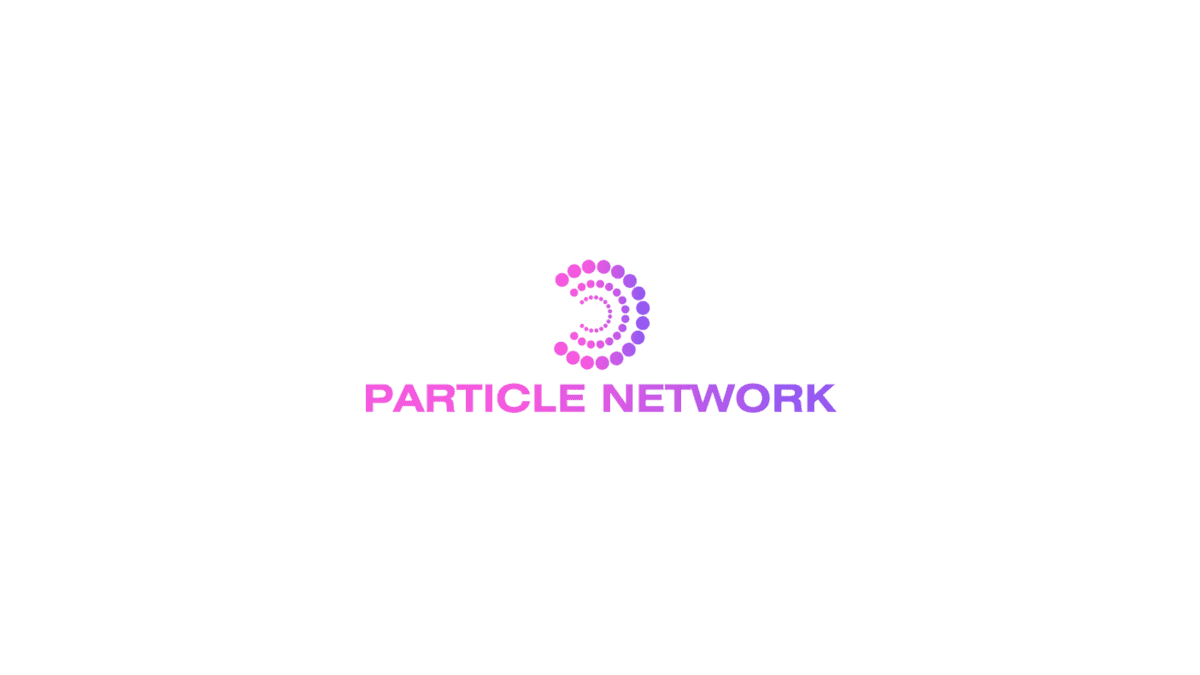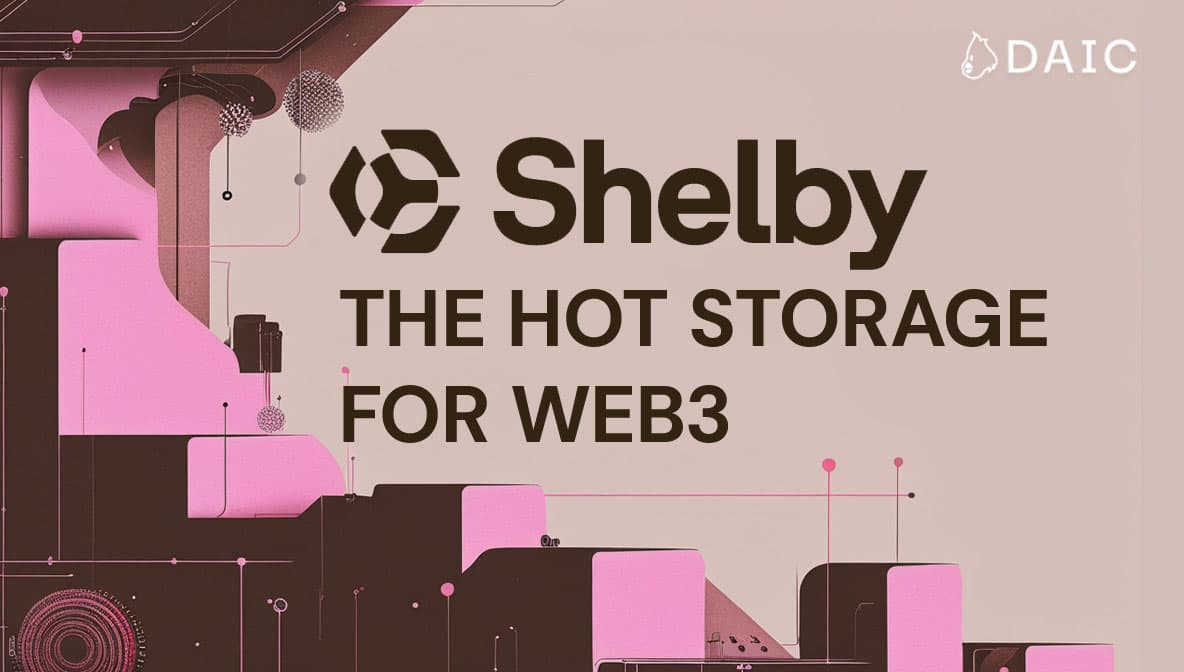Key Takeaways
- Chain Abstraction: Aims to simplify user experience by removing the complexity of interacting with multiple blockchains.
- CAKE Framework: A four-layer architecture that enables seamless interaction across blockchains, dApps, and middleware.
- Interoperability: Allows users to manage assets, trade, and interact with smart contracts across chains using one interface.
- Unified User Experience: Consolidates multiple blockchain accounts into one, improving accessibility and efficiency.
- Future of Web3: Expected to drive mass adoption by solving liquidity fragmentation and enhancing UX.
Introduction to Chain Abstraction
Fragmentation between different blockchain ecosystems is one of the most pressing challenges Web3 applications face today. For crypto and open public blockchain systems to become widely adopted, it is absolutely critical that two main pain points are solved going forward. These include:
- User experience (UX) complexity
- Liquidity and user fragmentation
Remember, as UX complexity increases, the more users struggle to carry out the required steps to obtain a desired outcome such as using a wallet or exchange to make a swap or send or receive a transaction.
This means that if a user has problems performing the required steps to conduct a simple transfer or basic interaction with an application, they are unlikely to want to learn how to use the service in the first place. Therefore, the overly complex nature of the Web3 landscape today greatly stifles innovation and adoption.
Moreover, if a user is unable to access their tokens on one chain because they exist within a different chain, which due to Web3 today, is siloed and disconnected from other chains, liquidity fragmentation and limited accessibility becomes the default.
In general, chain abstraction refers to the elimination of UX friction associated with the management of numerous blockchains, while simultaneously isolating end users from front-end blockchain interaction. As one of the most innovative chain abstraction-focused protocols in development, Particle Network refers to chain abstraction as: “A user experience exempt from the manual processes required to interact with multiple chains.”
Essentially, chain abstraction is a newfound paradigm focused on the development of blockchain infrastructure that leverages chain-connected wallets and dApps that seamlessly interoperate with one another while simultaneously eliminating end-user UX complexity.
As an example, chain abstraction allows users to utilize their wallet balances across a plethora of distinct blockchains as if they were unified into a single account atop an individual chain. This approach allows the larger Web3 arena to build applications unbound by the traditional UX limitations of independent chains to dramatically accelerate growth far beyond the Web3-bubble.
Although a recently developed approach to how blockchain connectivity is realized, chain abstraction and comparable constructs such as orchestration represent an industry-wide shift focused on the development of intuitive user interaction. Like any technology striving to achieve mainstream adoption, user experience is absolutely critical to realizing long-term success.
Within the larger Web3 ecosystem, the most adopted protocols and applications will always possess the best UX, resulting in those entities outlasting their competition. This reality will continue to be proven over and over again moving forward, meaning those that modify their outdated user-facing platforms to suit the needs of users stand a better chance at success long-term.
The above point can be considered even more relevant when it comes to the development of chain abstraction-focused infrastructures because their design eliminates the barriers that specific chains are susceptible to, whereby applications target users within larger multi-chain connected ecosystems instead of just being connected to dApps within the specific chain they are deploying on.
Therefore, design frameworks employing chain abstraction enable healthy industry-wide competition as opposed to siloed chain-specific competition, meaning the importance of UX will continue to grow as the industry evolves and more users adopt Web3 at large.
From a user perspective, it's only natural to gravitate towards the most accessible, Web2-like experiences, ultimately making chain abstraction-focused frameworks a key driver for user adoption. Consequently, the most effective chain abstraction solutions will feel comprehensive, preserving all critical features, while combining collective action into its necessary elements.
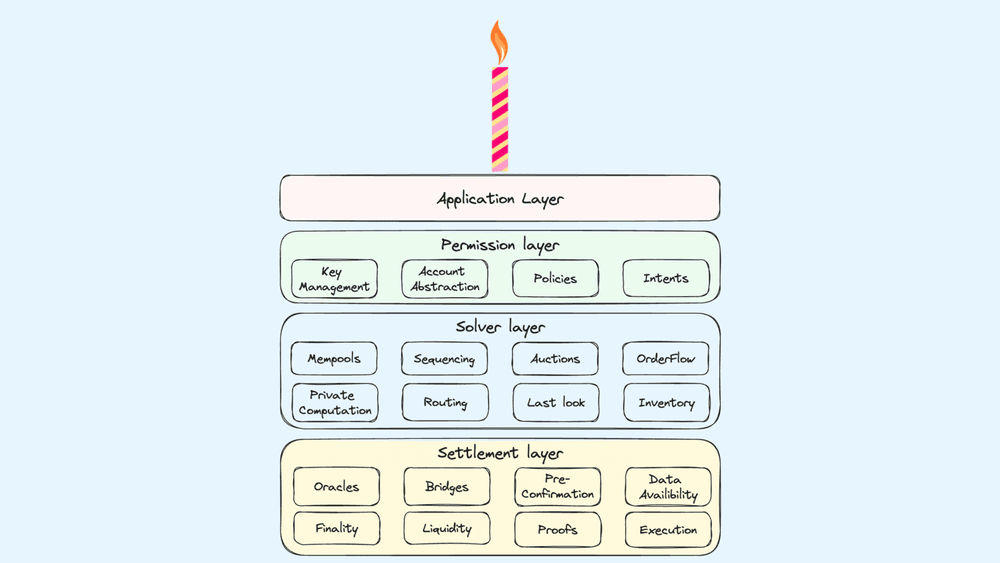
The CAKE Framework: A Model For Chain Abstraction
Introduced earlier this year by blockchain research and advisory firm Frontier Research, the Chain Abstraction Key Elements (CAKE) framework is a development construct that comprises four distinct layers of the protocol stack focused on achieving chain abstraction to improve user interaction across the larger blockchain ecosystem.
Within a chain abstracted world, such protocols are built to conceal back-end processes so the user is able to concentrate on what’s most important to them; their ability to transact (whether it be trading, sending or receiving transactions, or another DeFi or network-specific task) via an interoperable multi-network system in a manner that significantly increases task efficiency.
As an example, by harnessing chain abstraction dApp frameworks, it is possible for a user to self-custody their assets and open DeFi positions (i.e., for spot or perps trading, yield farming, or similar) on many chains simultaneously without requiring numerous wallets connected to a host of various platforms or worrying about the complexities involved with various digital signature types.
While akin to a traditional dApp interaction, chain abstraction allows users to access their multifunctional smart wallet (with a wide range of dApps and protocols within) leveraging concealed serviceability or go to a dApp’s website they plan to interact with and connect their wallet, sign the intended operation (whether a swap, token transfer etc.) and await final settlement.
With this approach, all time-consuming complexities the user typically faces bridging and moving various assets across chains are eliminated and take place within the CAKE framework. In addition, chain abstraction-enabled infrastructures leverage a interoperable multi-account system that removes potential gas fee inefficiencies by allowing users to hold a universal account token that allows them to pay gas on any blockchain using a single token.
This eliminates the need to hold and store a large number of tokens within a single wallet or account solely for the purpose of conducting various transaction types between different blockchains.
Remember, the ultimate vision for the CAKE framework is to provide accessibility to potentially hundreds of large blockchains, dApps, and middleware components all from one user-facing app (the application layer) on the user’s smartphone or computer.
The application layer is the topmost layer of CAKE and encompasses a wide range of applications built upon the chain abstraction stack. Apart from the application layer, the additional three layers that make up CAKE include the:
- Permission layer (application-level chain abstraction): Sitting directly below the application layer, the permission layer comprises execution and account-level systems and includes account abstraction, intents, key management solutions, and more. The permission layer allows users to connect their wallet to a dApp and then request a quote for a user intent. Application level abstraction allows developers to directly orchestrate streamlined transactions and intent execution via a single signature for their dApps. In general, achieving a shared account state between chains via an account-level or blockchain-level abstraction typically fails to address application developer challenges.
- Solver layer (account-level chain abstraction): As the middle layer in the CAKE stack, the solver layer is responsible for the deconstruction of intents and execution of cross-chain logic and other similar functions. The solver layer is used to estimate execution speed and fee amounts in proportion to the user’s initial account balance and intent. Known as solving, this process is critical in a cross-chain environment where transactions become asynchronous and sub-transactions can potentially fail during execution. The presence of asynchronicity is responsible for the creation of a cross-chain trilemma comprising execution speed, fees, and execution guarantee. Account-level chain abstraction unifies state (account settings, balances etc.) for user accounts across independent chains.
- Settlement layer (network-level chain abstraction): As the point farthest away from developers and end users, the settlement layer typically consists of networks or collectives of chains that have agreed to share security, oracles, data availability (DA) layers, execution, and other related constructs. Network-level abstraction allows different chains to migrate to other chains or share state between one another within an existing multi-chain network. Generally, upon private key user transaction approval, the settlement layer is used for the transaction’s execution. This process involves two main steps: 1.) bridging the user’s assets onto the target chain, and 2.) executing the transaction.
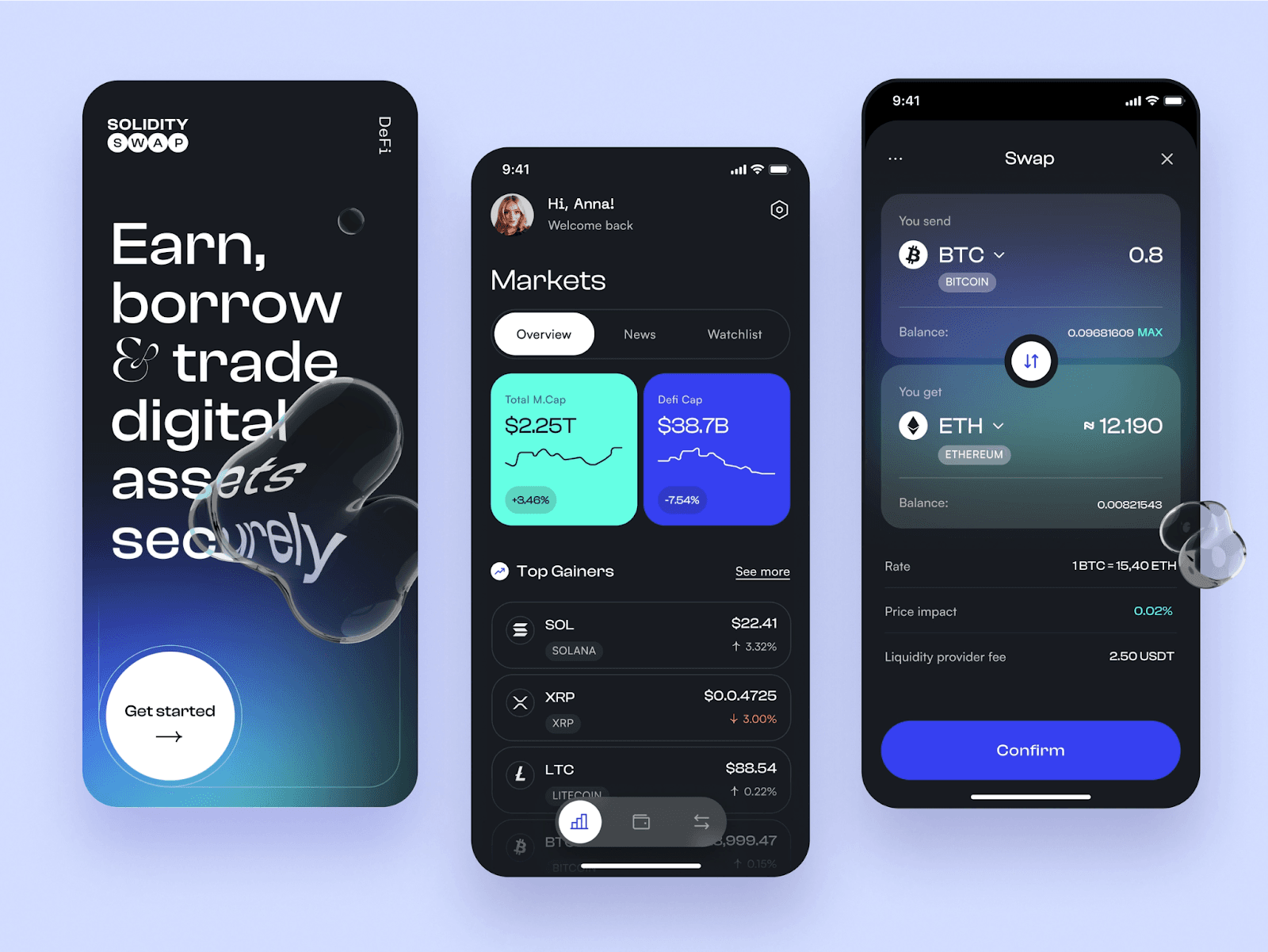
The Inevitability of a Multi-Chain Future and Its Continued UX Challenges
With the inevitable growth of the blockchain and crypto industry moving forward, the industry will increasingly become multi-chain as more protocols, ecosystems, networks, middleware services, and the like come to exist.
The inevitability of this interoperable future will continue to become increasingly more impactful via the fast-growing modular infrastructures that allows developers to fully customize their chains, protocols, and the like for nearly use cases, ultimately helping contribute to the vision of a world with thousands of blockchains. This continued development will make chain abstraction-focused designs non-negotiable.
On a basic level, this evolution will dramatically increase UX complexity because there will be so many blockchains (and the many components that support these chains) built in an endless number of ways (think L2 rollups, appchains, L1s, and others), that it will be extremely difficult to unify all system types within a single mass-scale user-connected paradigm.
Each chain naturally will continue to develop their technical solutions and product and service offerings in numerous ways. If you analyze the basic model of the internet and how it came to fruition, the World Wide Web (WWW) represents an endlessly-evolving global network of data and information that will continue to exist in perpetuity.
A similar model centered on the blockchain and crypto realm is increasingly becoming the reality with each passing day as more lines of code are deployed across a never-ending ecosystem of networks striving to be interconnected.
Thankfully however, many experts believe that most user-experience challenges can be solved using chain abstraction. At present, there are probably less than 50 large-scale (with perhaps 300 to 400 that have the potential to be large in time) open public blockchains that actually have strong adoption that continues to accelerate.
Notwithstanding, the key is to create solutions that actually solve these problems before the blockchain and crypto industry expands to hundreds or thousands of independent blockchains operating at scale.
For developers and product managers, the continuous battle to improve UX is a constant undertaking that must meet the evolving needs of customers and market expectations.
Although chain abstraction frameworks such as Frontier's CAKE and others help designers and developers become more familiar with the concept, understanding where and how to apply chain abstraction to enhance UX is continually evolving because of how nascent the technology is and how complex the potential technical solutions are.
The below section will provide a means to identify key components within an application where chain abstraction solutions at various levels can improve UX. By concentrating on these critical elements, developers are able to build applications that are more focused on creating efficient, intuitive, and enjoyable experiences for their users.

Multi-Level Chain Abstraction User Flow Considerations
By expanding upon the idea behind Multi-Level Chain Abstraction, below we’ll analyze how chain abstraction can be integrated into user flow via a hypothetical Multi-Chain Asset Manager application that leverages the serviceability of chain abstraction. The main goal of the hypothetical Multi-Chain Asset Manager application is to streamline how users manage their digital assets across different blockchains while exemplifying an implementation of chain abstraction.
By leveraging chain abstraction, the application is able to provide a highly-performant, permissionless, centralized platform-like experience fully on-chain. This model will allow users to perform complex multi-chain transactions, swaps, and smart contract interaction without having to understand the complexities associated with each blockchain or spend time manually changing network connections.
It’s easier to comprehend the benefits of chain abstraction by presenting the Multi-Chain Asset Manager framework into different user flow categories to help us understand potential solutions to address UX complexity and user and liquidity fragmentation pain points in today’s Web3 landscape. Although this idea will vary depending on who you ask, user flow is often categorized into four distinct elements. These include:
- Account Creation and User Onboarding - the process users undergo to create a wallet or similar account type that is capable of interacting with numerous blockchains and dApps within a distinct chain abstraction framework
- Asset Overview and Management - the ability to utilize and manage assets within a signal on-screen dashboard that is user-friendly, intuitive, and secure, while ensuring the classification of specific chains and their corresponding assets possess the optionality to be visible or not
- Trading and Swapping Assets the user-focused interaction involved with the trading and swapping of assets between various chains within a wallet or wallet-connected DEX
- Smart Contract Interaction the ability for smart contracts from multiple chains to interoperate and connect with one another in seamless, secure, and transparent manner
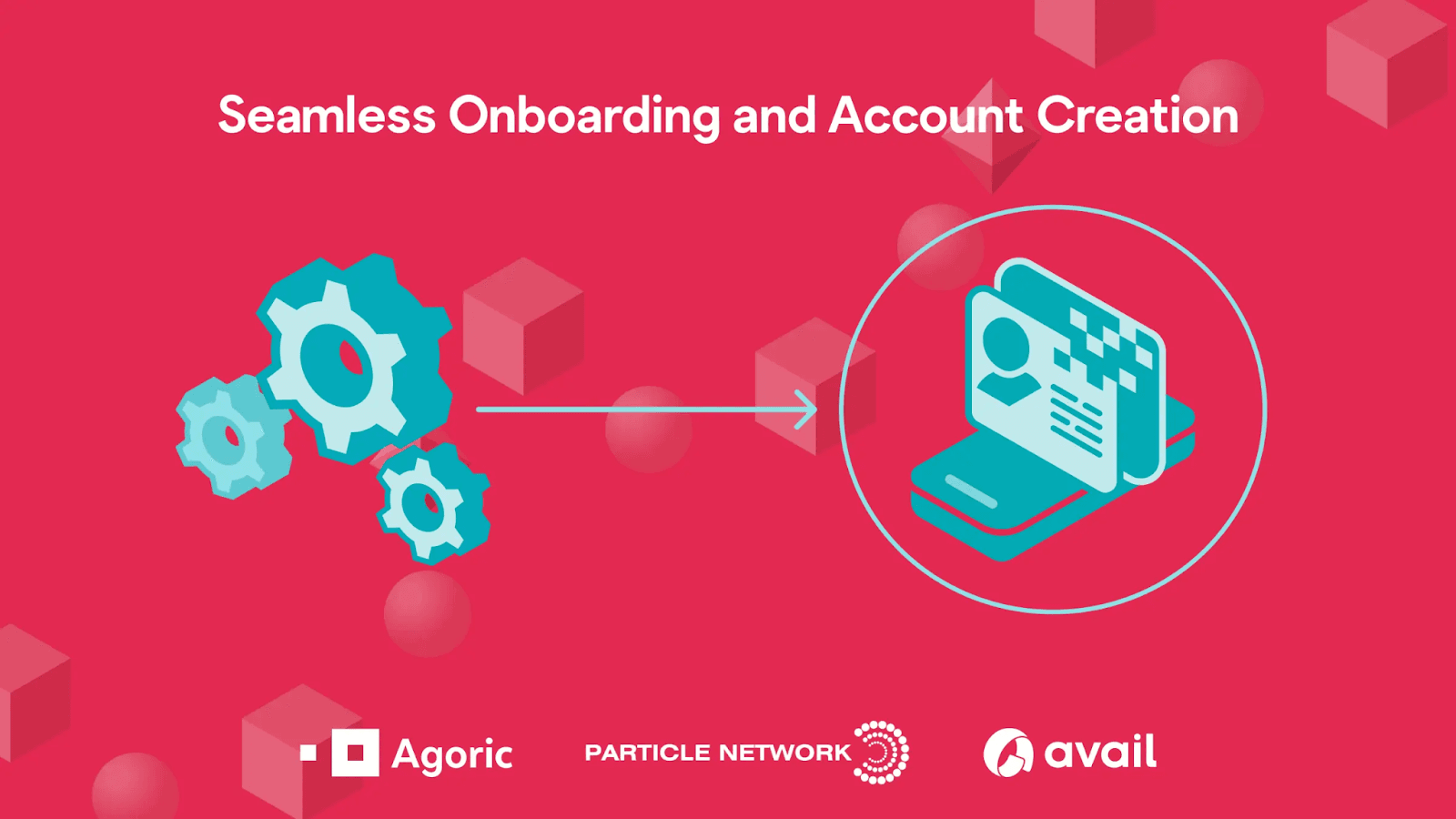
Account Creation and User Onboarding
As any Web3 user has discovered through experimentation, interacting with crypto often requires a user to create and manage multiple accounts for each wallet or chain they utilize. This greatly increases complexity, wastes time, and involves the management of numerous distinct private keys and user interfaces, amongst a plethora of additional challenges.
One of the ways chain abstraction can help dramatically improve the UX for all involved is through a social login process that allows users to create their dApp or wallet with only 2 simple steps. These typically include: 1.) linking their social media account directly to a sign up page they are directed to via the project’s website and 2.) the retrieval and autonomous input of a 6-digit code that is generated via the user’s cell phone or via the social media account itself (which can be generated via Linkedin, Facebook, or through a user’s Apple ID, Google ID, or similar mechanism).
User onboarding can become markedly more efficient via the creation of a universal account that acts as an extension of the user’s existing crypto wallets via different constructs (such as social logins and connectivity to EVM and Bitcoin wallets). Specifically, chain abstraction pioneer Particle Network makes use of a universal account system to realize this type of system.
This account creation and onboarding process significantly reduce the time required for a user to create a wallet, allowing them to avoid the cumbersome challenges related to writing down and securing seed phrases and other related complexities.
Upon signing up for the Multi-Chain Asset Manager a user creates a universal account. Universal accounts allow users to leverage one interface to connect with a wide range of blockchain networks via a central balance (a single balance for multiple asset pools held within numerous connected chains displayed within your wallet) and a unified address, reducing the need for multiple accounts and private keys to provide a smoother and more intuitive user onboarding and management experience.
Asset Overview and Management
The Multi-Chain Asset Manager utilizes a universal dashboard that aggregates data from multiple blockchains. Powered by orchestration, this dashboard allows users to monitor their portfolio, track performance, and modify the specificities of the assets they hold without switching between multiple platforms or chains.
Crypto users are generally required to use multiple wallets and interfaces to view and manage their assets across a host of distinct blockchains, leading to fragmentation and a disconnected user experience. To combat these challenges, chain abstraction provides a unified interface for asset management that eliminates the complexities associated with interacting with numerous blockchain types by allowing users to view and manage their assets in one location.
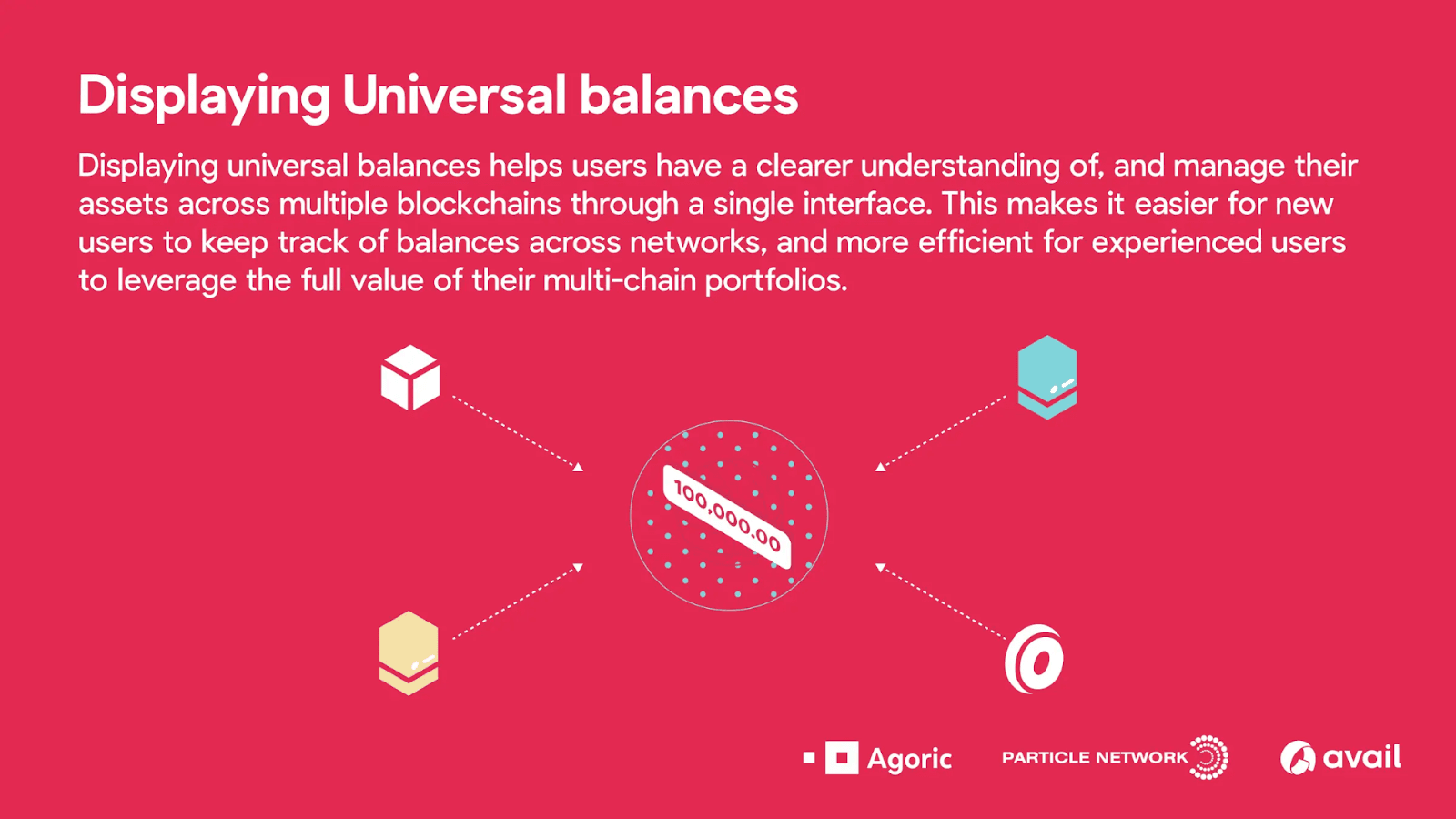
Displaying Universal Balances in a Chain Abstracted Interface
Displaying universal balances across an intuitive dashboard allows users to obtain a clearer picture of multiple balances across numerous networks by reconstructing the data in an easy-to-understand view.
Building this type of dashboard involves the integration of data from multiple blockchains simultaneously, while requiring orchestration to manage real-time data flows, a data availability layer to facilitate transfer, and a universal accounts framework to consume data feeds.
For the dashboard to work as intended, it must be capable of interacting with numerous blockchains simultaneously and reconstructing the data in a user-friendly manner. To realize this goal, numerous API integrations are required, along with real-time data processing, and a high degree of reliability to guarantee that users are given an accurate understanding of their holdings at a particular moment in time.
Trading and Swapping Assets
Traditionally within the Web3 space, the trading and swapping of assets across different blockchains requires users to navigate between multiple exchanges and to understand the specifics of different blockchain transaction processing types. This process can be extremely cumbersome, often requiring just as many transactions (and digital signatures) as different applications.
By employing different chain orchestration types, developers are able to apply the principles of chain abstraction to streamline trading and swapping processes. Although nascent in many respects, chain orchestration frameworks provide the necessary tools required to conduct efficient secure cross-chain transactions to enable a seamless trading experience.
An example of this is if a user were to sign one transaction and execute a complex workflow of multi-chain operations, facilitated by orchestration (such as executing trades on multiple blockchains within a single wallet interface).
To learn more about the swapping and trading of assets and how DeFi platform suites work, consider having a look at our Berchain blog post on this topic.
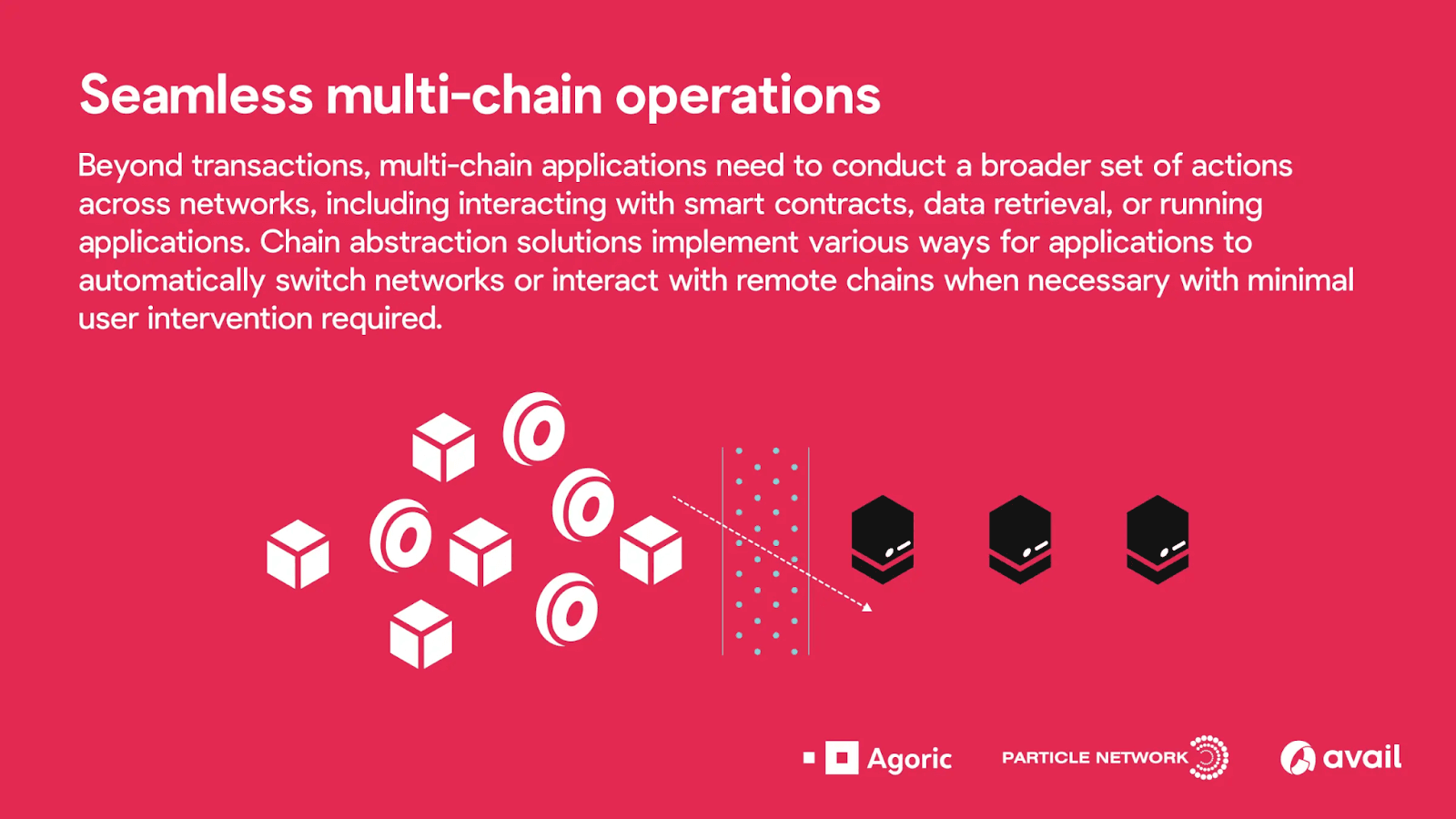
Multi-Chain Operations via Chain Abstraction
Besides transactions, multi-chain applications must be able to carry out a larger set of actions across a plethora of networks including data retrieval, smart contract interaction, and running applications. The introduction of chain abstraction allows applications to automatically switch between networks or interact with remote chains with minimal user intervention.
Upon access, the Multi-Chain Asset Manager would enable a means to trade and swap between assets directly within the app. By utilizing orchestration, the application is able to handle extremely complex transactions in an efficient and largely invisible manner, providing an intuitive and simple interface for trade execution.
In addition, because of the presence of the previously mentioned utility provided by universal accounts, these orchestration-powered transaction workflows can be funded using assets held on any blockchain; meaning they can be managed, viewed, and handled as if they were present within a single chain.
Smart Contract Interaction
Interacting with different smart contracts atop many blockchains requires users to switch between different wallets and interfaces, resulting in a process that is fragmented and overly complex. For developers, building applications that are able to simply handle a plethora of multi-chain transactions can be just as awkward.
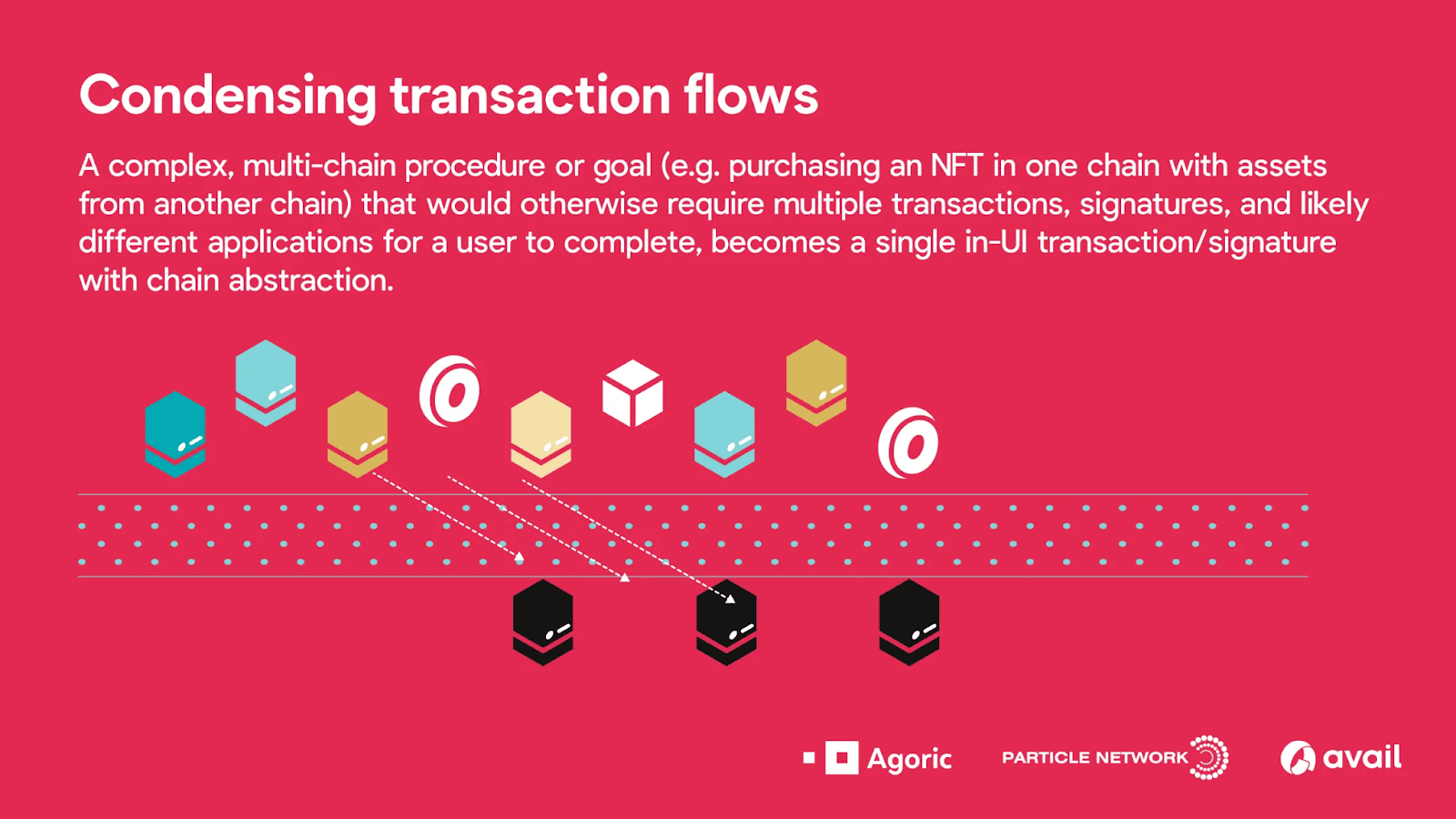
Condensing Interaction Flows Through Chain Abstraction
By leveraging chain abstraction, complex multi-chain processes (such as purchasing an NFT from a single chain with assets from another) that would typically require multiple transactions, signatures, and different applications for a user to complete, become a single in-UI transaction/signature.
Account-level abstraction and application level orchestration can provide a unified interface for multi-chain smart contract interaction across a plethora of chains, allowing users to engage with applications and execute smart contract interaction without switching wallets or considering underlying blockchain interactions.
The Multi-Chain Asset Manager incorporates an application browser that supports an ever-expanding number of blockchains. Using this approach, users are able to interact with smart contracts directly in-app because of its capability to support seamless chain-abstracted interaction amongst a number of chains. This design allows users to browse Web3 applications akin to surfing the internet.
By employing the utility of chain orchestration, universal liquidity, and more streamlined gas frameworks, users are able to interact more freely with applications or contracts when user assets are not held, while also being able to pay gas fees with any token.
Through orchestration layers and network API’s, developers are able to leverage a universal set of operations that can reach across chains without the need to program complex low-level commands for each distinct network. With tools such as these fully accessible, developers are able to reduce transaction and smart contact interactions down to their most necessary elements, minimizing complexities to obtain the desired result.
The Evolving Landscape of Chain Abstraction
Although a recently developed framework in blockchain systems, chain abstraction holds vast potential in eliminating challenges related to user fragmentation and UX complexity, while simultaneously showcasing the ability to dramatically improve liquidity accrual across the connected blockchain landscape.
By significantly improving user experience, chain abstraction technologies hold a vital role in driving the continued adoption of open public blockchain systems and the Web3 industry at large.
Benefiting both novice and experienced users alike, chain abstraction offers numerous solutions that conceal complex technical intricacies from users, allowing them to focus on executing simple tasks (think trading, swapping, sending and receiving transactions, and using other dApps) all within a single user interface or wallet.
In addition, the CAKE development stack represents one of numerous blockchain design frameworks focused on reducing back-end complexities and making front-end user interaction more streamlined for the user.
While CAKE and other chain abstraction-focused development paradigms can be extremely complicated to build behind the scenes, the end result for users is worth the work, particularly if the company building the service considers creating a whitelabel product that can be distributed to a larger number of crypto and Web3 startups within the industry to further expand simpler UX at large.
The societal-shifting paradigm that is Web3 and crypto provides all of us with the chance at a better future. A future that allows us to hold and manage our own value anywhere we choose to without being told otherwise. This capability will be greatly enhanced through the development of easy-to-use, intuitive, and efficient interactions brought about through chain abstraction and its various interrelated frameworks.
The information provided by DAIC, including but not limited to research, analysis, data, or other content, is offered solely for informational purposes and does not constitute investment advice, financial advice, trading advice, or any other type of advice. DAIC does not recommend the purchase, sale, or holding of any cryptocurrency or other investment.
